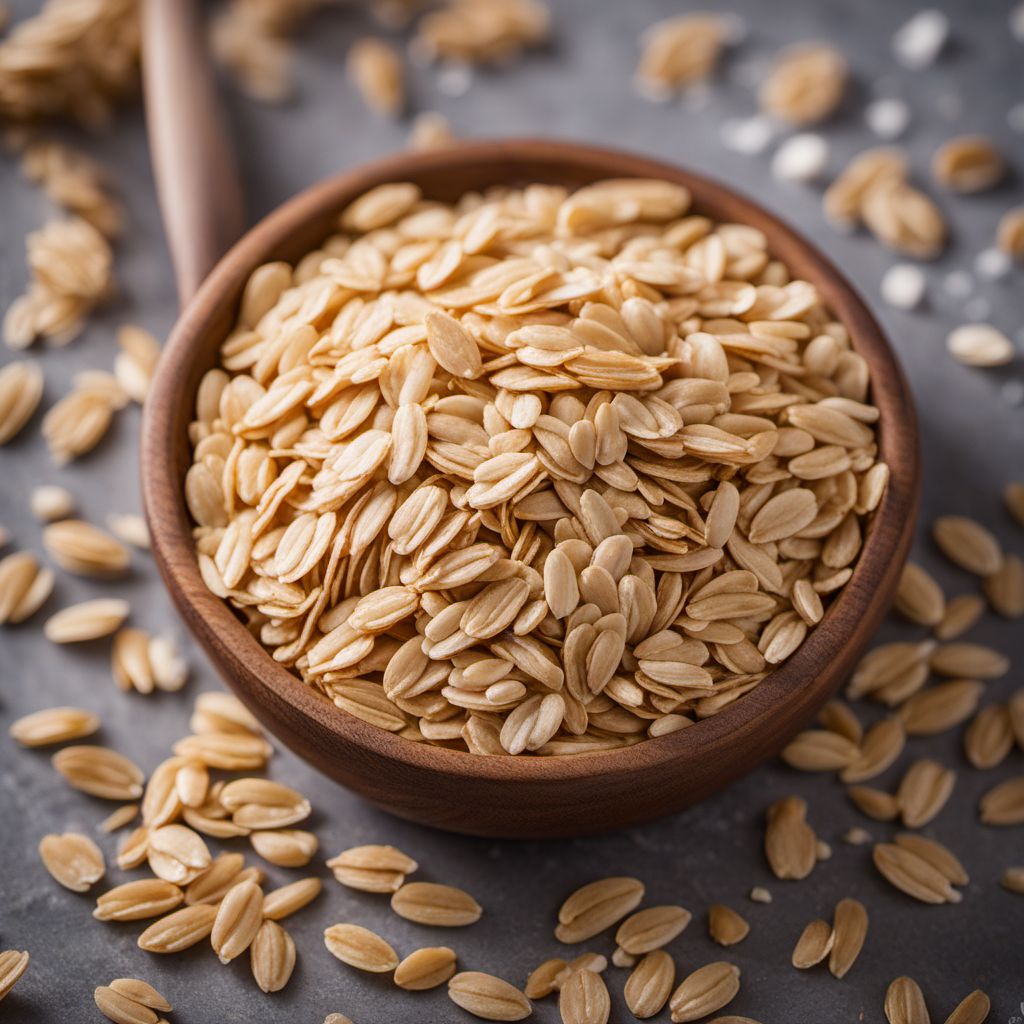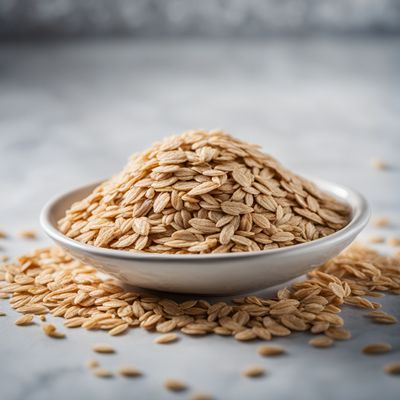
Ingredient
Processed oat-based flakes
Wholesome Crunch: Exploring the World of Processed Oat-Based Flakes
Processed oat-based flakes are made by rolling and flattening whole oat grains, resulting in thin, flattened flakes. They have a slightly chewy texture and a nutty flavor that adds depth to recipes. These flakes are often processed to enhance their shelf life and can be found in various sizes, including quick-cooking and old-fashioned varieties. They are a popular choice for those seeking a wholesome and fiber-rich ingredient.
Origins and history
Oats have been cultivated for thousands of years and have a rich history in Europe and North America. They were initially grown as a weed until their nutritional benefits were discovered. Oats gained popularity as a staple food in Scotland and were later introduced to other parts of the world. Today, oats are widely cultivated and processed into various forms, including oat-based flakes.
Nutritional information
Processed oat-based flakes are a nutritional powerhouse, packed with fiber, protein, and essential vitamins and minerals. They are low in fat and cholesterol-free, making them a heart-healthy choice. A 1-cup serving of processed oat-based flakes contains approximately 150-200 calories, depending on the brand and variety.
Allergens
Processed oat-based flakes may contain traces of gluten, making them unsuitable for individuals with celiac disease or gluten intolerance. It is important to check the packaging for any allergen warnings.
How to select
When selecting processed oat-based flakes, look for brands that use high-quality oats and minimal processing. Opt for organic or non-GMO options if available. Check the packaging for any added sugars or artificial ingredients, and choose flakes that are free from any signs of moisture or clumping.
Storage recommendations
To maintain the freshness and quality of processed oat-based flakes, store them in an airtight container in a cool, dry place. Avoid exposure to moisture or direct sunlight, as this can cause the flakes to become stale or lose their crunchiness. Properly stored, they can last for several months.
How to produce
Amateur gardeners can grow oats by sowing oat seeds in well-drained soil during the spring or fall. Oats require cool temperatures and moderate rainfall to thrive. Once the plants have matured, the grains can be harvested, dried, and processed into flakes using a rolling mill or flaker.
Preparation tips
Processed oat-based flakes can be enjoyed in a variety of ways. They can be used as a base for homemade granola, added to smoothies for extra texture, or used as a topping for yogurt or desserts. To enhance their flavor, toast the flakes in a dry skillet over medium heat until they turn golden brown. This will add a delightful nuttiness to your dishes.
Substitutions
Rolled barley flakes or quinoa flakes can be used as substitutes for processed oat-based flakes in recipes. These alternatives offer similar textures and nutritional profiles, making them suitable replacements.
Culinary uses
Processed oat-based flakes are commonly used in breakfast cereals, granola bars, cookies, and bread. They can also be incorporated into savory dishes like meatloaf or used as a coating for chicken or fish. Their versatility makes them a staple ingredient in both sweet and savory recipes.
Availability
Processed oat-based flakes are widely available in grocery stores and supermarkets worldwide. They are commonly cultivated in countries such as the United States, Canada, and Europe.
